Drain the engine coolant. Remove the radiator cap to speed draining.
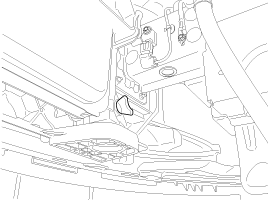
Drain the engine coolant. Remove the radiator cap to speed draining.

Remove the radiator upper grill (A) and the air duct (B).
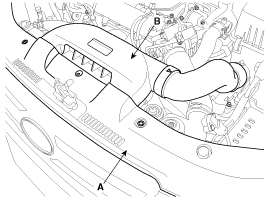
Remove the radiator upper hose (A).
Remove the radiator lower hose (B).
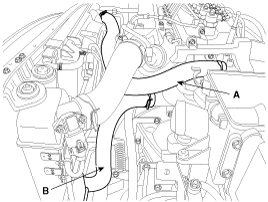
Remove the clamp on the cooling fan cover.
Disconnect the fan motor connector (A).
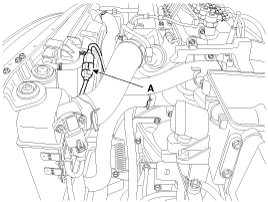
Disconnect the hose (A) between the reservoir and the radiator.
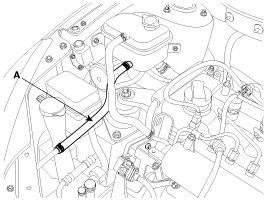
Remove the radiator upper mounting brackets.
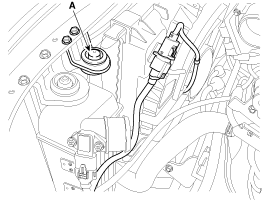
Remove the blower assembly from the radiator.
Remove the condenser from the radiator.
Remove the radiator cap, wet its seal with engine coolant, then install it no pressure tester.
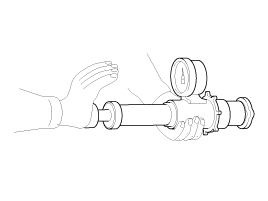
Apply a pressure of 93.16 ~ 122.58kpa (0.95 ~ 1.25kg/cm², 13.51 ~ 17.78psi).
Check for a drop in pressure.
If the pressure drops, replace the cap.
Wait until engine is cool, then carefully remove the radiator cap and fill the radiator with engine coolant, then install it on the pressure tester.
Apply a pressure tester to the radiator and apply a pressure of 93.16 ~ 122.58kpa (0.95 ~ 1.25kg/cm², 13.51 ~ 17.78psi).
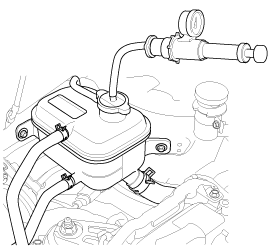
Inspect for engine coolant leaks and a drop in pressure.
Remove the tester and reinstall the radiator cap.
Check for engine oil in the coolant and/or coolant in the engine oil.
Install the radiator to vehicle with mounting brackets and then tighten the bolts.
Tightening torque :
6.9 ~ 10.8Nm (0.7 ~ 1.1kgf.m, 5.1 ~ 8.0 lb-ft)
Install the cooling fan to the radiator.
Tightening torque :
8.8 ~ 10.8Nm (0.9 ~ 1.1kgf.m, 6.5 ~ 8.0 lb-ft)
Install the radiator to the air conditioning condenser and the radiator upper bracket.
Connect the hose (A) between the radiator and the reservoir.

Connect the fan motor connector (A).

Install the upper (A) and the lower radiator hoses (B) and the automatic transaxle fluid (ATF) cooler hose.

Fill with engine coolant and install the air duct (B), the radiator upper grill (A).

Start engine and check for leaks.